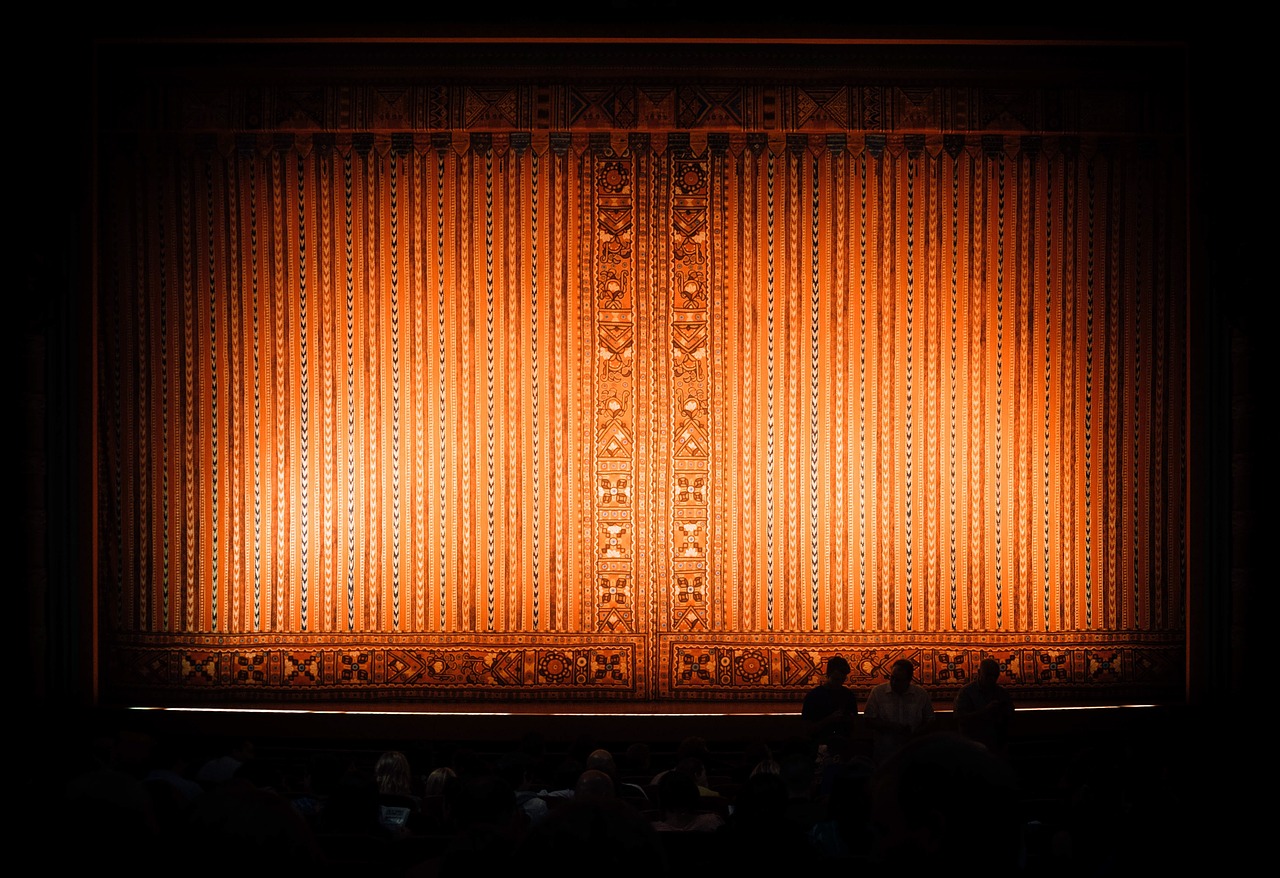Stage and Theater Vocab Posted by Gary Locke on May 9, 2019 in Uncategorized
As I have mentioned in this space before, I work in theater. The world of theater has its own very unique vocabulary, some of which may sound very familiar to you, while some will probably sound quite odd. This seems like a good time to share and explain some of the most important vocabulary terms associated with my home away from home – the stage.
First, let’s tackle the word theater. It actually has two common spellings. Theater, ending in –er, is the correct and proper spelling for almost all usage of the word. However, theatre, ending in –re, is a proper spelling if you are referring to the building in which theater is performed. “I am a theater professional. I work at the Palace Theatre.” In Britain, you will frequently see the -re spelling for both iterations of the word. However, even there, the -er spelling has been more commonly accepted since Shakespeare’s time.
For those of us who spend much of our time inside a theatre, working on and around the stage, we use a language all our own. Let me now give you a peek inside my world.
The Stage
The actor controls the stage. Therefore, it is from the actor’s perspective that we define the parts of the stage.
Stage Right is the right-hand side of the stage as the actor sees it, facing the audience.
Stage Left is the left-hand side of the stage as the actor sees it, facing the audience.
Upstage is away from the audience.
Downstage is closer to the audience.
Center Stage is, you guessed it, the center of the stage.
Backstage is anywhere cast and crew can be out of view of the audience.
The Deck is also commonly known as the stage floor.
Flies The area above the stage where scenic or lighting instruments are hoisted to be out of the audience’s view. To bring a hanging piece of scenery to the stage is to fly it in.
House runs from the back of the theatre to the stage.
Legs are drapes hung to mask backstage.
Orchestra The area of audience seating nearest the stage, not to be confused with…
The Pit is where the orchestra sits, typically sunken below the front of the stage.
The Proscenium is that which frames the stage from the audience’s perspective, usually an arch.
Rake is the angle of incline from downstage to upstage.
The Wings is the area directly off to the side of the stage
Theater Personnel
ASM – The Assistant to the Stage Manager
Conductor – The leader of the orchestra, usually the Music Director
Choreographer – The creator of the dances in a show
Crew – Those responsible for scenic and prop changes
Dance Captain – The cast member given responsibility for helping to teach other cast members the show’s choreography
Designer – The person responsible for designing specific elements of the show, including Lighting, Sets, Sound, Projection, Props, Special Effects
Director – The person responsible for the artistic vision of the entire production
Dressers – People assigned to assist the actors in changing costumes during the show
Orchestra – The musicians who play during performances of musicals
Producer – The person who hired most, if not all, of the personnel for the production, including the Director; also responsible for final approval on all budgetary matters
Stage Manager – This is the Director’s primary assistant, responsible for scheduling and running rehearsals, communicating the Director’s wishes to designers, coordinating the work of the stage crew, calling cues and actors’ entrances during a performance. In Shakespeare’s time, this person was called the Book Holder, because they maintained all the notes in the script.
Bits and Pieces
Batten – A pipe for hanging lights or curtains
Cyclorama (Cyc) – Fabric, usually white, which hangs on a curved pipe against the back wall of the theatre
Dimmer – A device used to lower and raise the brightness of one or more lights
Fire Curtain – A fire-proof curtain which may be lowered in front of the house curtain in the case of fire
Gel – A thin sheet of plastic used to color lights
Ghost Light – A single light on a stand which sits onstage in an otherwise empty dark theatre. In stage superstitions, it lights the way for the ghosts of dead actors to perform when everyone else has left the theatre.
Gobos – Stencils, usually made of tin, placed in front of lights to create a pattern or shapes
Masking – Some form of inobtrusive scenery, usually black fabric on a drape, used to conceal a part of the stage from the audience
Practical – Something on the set which performs a physical function: a working lamp, or a doorbell which actors control, for example
Scrim – A theatrical gauze curtain that, when lit from the front is opaque and when lit from the back is transparent
This list is far from complete. Would you like to add to this list, or are there terms and expressions which you’ve heard and have wondered about? Please add them to the comments section. I’ll be happy to answer them.

Build vocabulary, practice pronunciation, and more with Transparent Language Online. Available anytime, anywhere, on any device.




